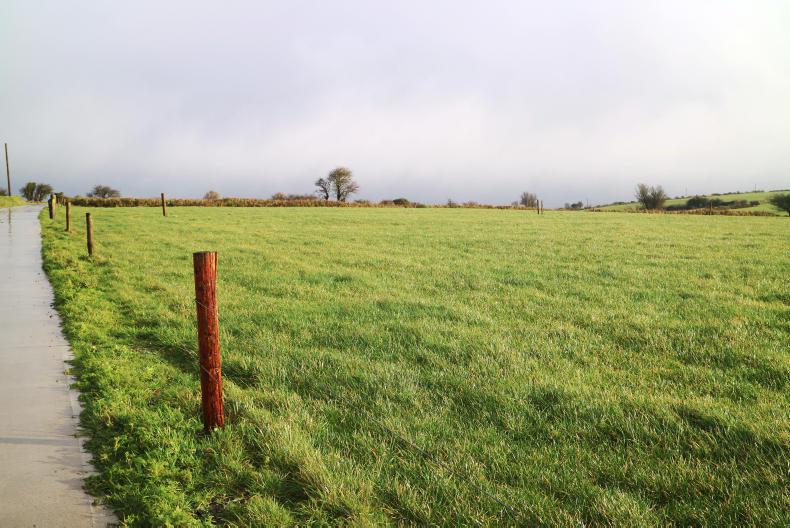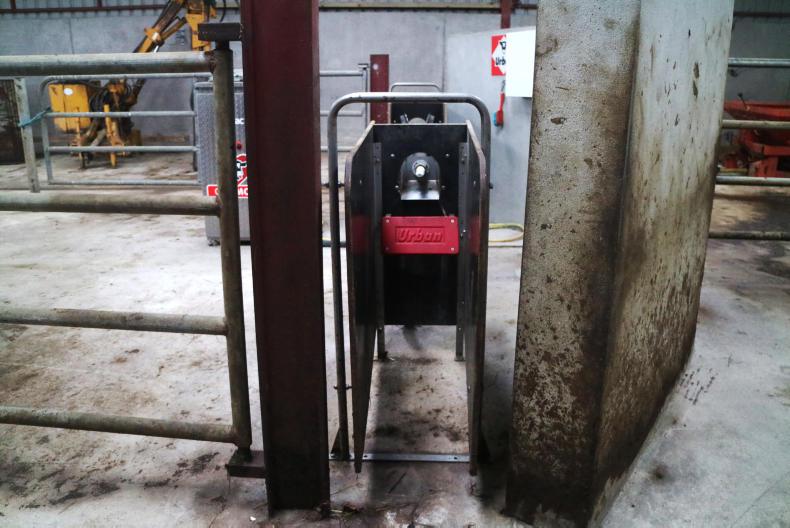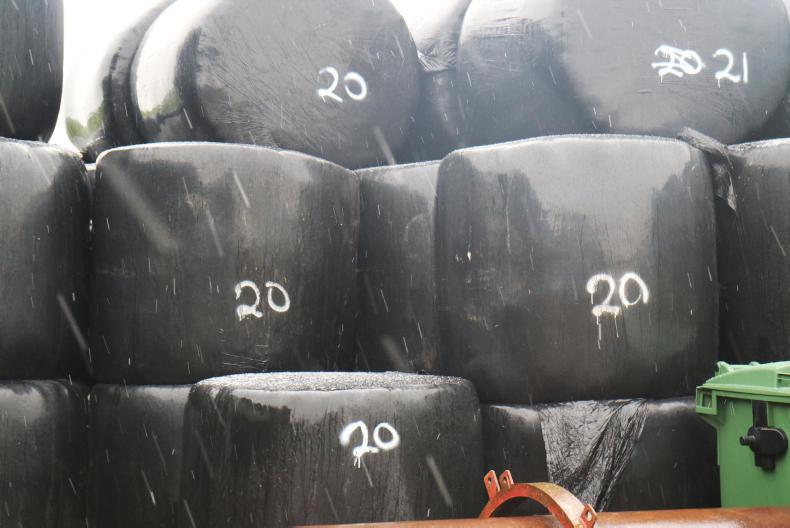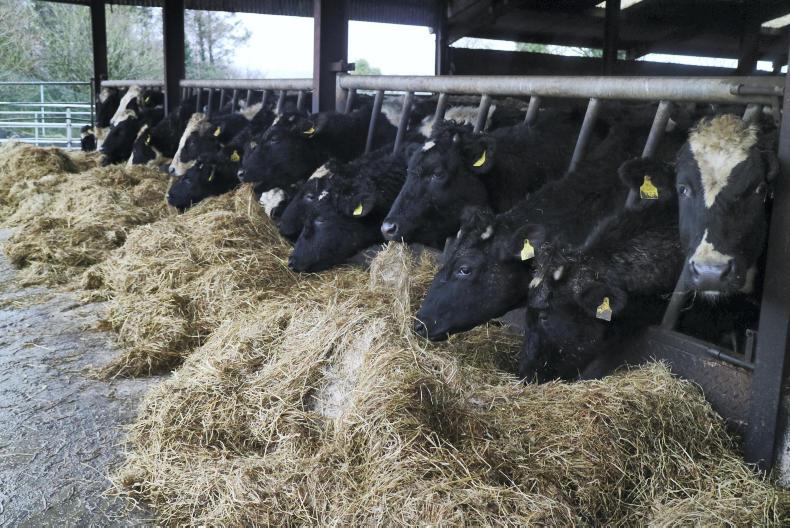In late 2016, the Irish Farmers Journal visited Kieran Broderick’s farm in Freemount, Co Cork.
Kieran had been nominated to partake in phase three of the BETTER farm beef programme.
Kieran was producing solely dairy beef.
However, such was the gathering momentum around calf rearing and dairy beef at the time, we felt a flagship dairy beef operation was warranted in the traditionally suckler-focused programme.
The farm was being excellently run. Kieran himself was focused and knew exactly where he was going.
Indeed, we were informed in jest that he would be “carrying on with what he was doing and we could come along too if we wanted”.
Though the decision was made to stick with suckler operations in the BETTER programme, the Irish Farmers Journal was eager to return to Kieran’s farm for an update. Last week, we did just that.
“We were dairying here until 13 years ago,” Kieran said as we walked the 55ha grazing block. The land is split into 40 paddocks and Kieran divides these again with stripwires where necessary.

Seventy calves are taken in annually in the spring for rearing. Pure British Friesian and Holstein calves are his animal of choice and Kieran brings these to steer beef at 28 to 30 months off pasture, halfway through their third grazing season.
The vast majority of the animals’ lifetime diet is grass and forage based. Meals are withdrawn post-weaning.
Around one kilo is offered for three months during the first winter and finishing animals are supplemented with 2kg for two months prior to slaughter.
Total meal input is well under 0.5t lifetime.
Having once sourced calves through agents and marts, Kieran opted to buy his own calves direct from farm.
“I find the consistency is there now and the fact that I’m only dealing with four farms helps in terms of minimising health risks and logistics. Three of the source farms would be heavily Holstein-influenced while the other has British Friesian genetics,” he said.
Kieran has an automatic calf feeder installed in a dedicated rearing shed. The feeder has two stations, each of which rears 35 calves.

Each station on Kieran's calf feeder can cater for 35 calves.
“The feeder is huge for the farm. It essentially frees up a labour unit in the springtime. One of the most positive aspects of the dairy beef is the flexible lifestyle that comes with it – the dairy doesn’t necessarily give you that.
"I have a young family and do some off-farm work too. Three to four hours does all of my farm work in the spring, including rearing,” Kieran told me.
Upon landing on the farm, calves are treated for coccidiosis and vaccinated against pneumonia – intranasally if a problem is suspected.
“They go straight on to the feeder then and are normally trained up within three days. The machine tells me what calves haven’t drunk in a given day and I can bring them down myself and encourage them to suck.
"A lot of the calves would’ve been fed from nipple drinkers on their source farms so they get accustomed to the feeder fairly quickly.”
Calves are reared in 64 days on a curve of milk that peaks at six litres. They have concentrate and straw available at all times and hay is introduced towards the end of rearing.
Hygiene is vital in the rearing shed. It is fully cleaned out prior to the calves’ entry and Kieran is liberal with his straw bedding. He is operating on a mortality rate of 3%.
“I suppose we’re weaning them around 100kg. They’ll have been getting access to light covers of grass from mid-March.
"We turn them out full-time post-weaning and keep supplementing with concentrates for around two weeks,” Kieran said.
Grassland management
Grassland management is one of Kieran’s most impressive skills. The farm is walked weekly and any cover in excess of 2,500kg DM/ha (14cm) is removed for surplus bales.
These are removed early, often at yields of less than five bales per acre, so that they’re back into the system quickly.

Kieran numbers each batch of surplus bales.
Bale batches are numbered using white paint in the yard. Covers are logged into the Teagasc Pasturebase system weekly.
Young calves graze covers of 1,100-1,200kg DM/ha (9cm) in their first season, they aren’t adept grazers like their older counterparts who can tackle heavier covers.
Kieran grazes his animals in mobs of 70.
“I used to split them into three 20s or thereabouts but I found that there were too many paddocks out of the system at one time.
"It also meant there were nine groups to manage. The new way is much easier and gives me great grazing power. There’s very little topping here,” he said.
There has been a big focus on soil fertility in recent years, with no straight nitrogen spread since 2010.
“We target our slurry based on soil tests and use 18-6-12, Cut Sward and Pasture Sward fertilisers.”
Kieran’s grassland stocking rate peaked at 4.5 LU/ha in mid-May 2017.

Kieran's two year-old steers on their winter silage-only diet.
“It’s the second half of the grazing season when grass gets difficult to control here. My cattle are slaughtered around 29 months, or mid-summer. I aim for a carcase weight of around 300kg and they walk into the yard for eight weeks pre-slaughter to eat 2kg of a concentrate.
"While they’re in the yard, I move on the strip-wires. There’s no messing with troughs or poaching and it makes for very quiet cattle – they walk in like cows to the parlour,” Kieran said.
Kieran kills 10 animals in January for cashflow – they buy his calves.
The most forward 10 steers are segregated and fed 5kg of meal and good-quality silage for two months pre-slaughter.
He is toying with the idea of rearing a batch of calves later in the autumn as a means to get more from his calf feeder, otherwise lying idle for three-quarters of the year.
It would also help to better utilise the splurge of grass that comes once his spring-born animals are slaughtered in the summer.
Kieran is also contemplating taking in cull cows for a short stay period in the back end, to flesh up at grass. A new slatted unit is being erected in the yard that will allow Kieran to boost numbers, whatever he decides.
Read more
Calf milk replacer market warms up





SHARING OPTIONS: